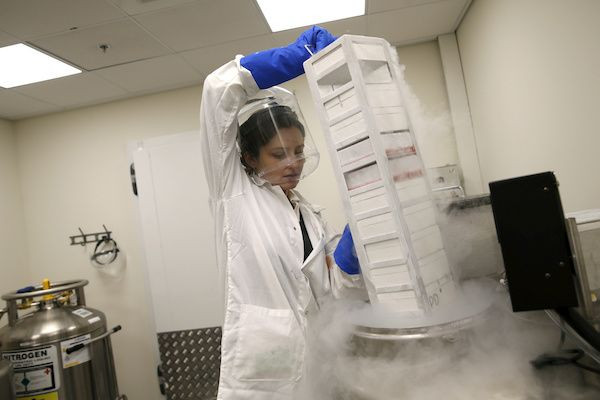Scientists Engineer Artificial Cell That Harnesses Photosynthesis To Function Like Real Cells

Scientists may have just created another breakthrough in the field of biology. A group of researchers has engineered an artificial cell that can carry out metabolic reactions similar to those of real cells.
South Korea’s science ministry disclosed Tuesday that a group of scientists from its country and the United States have developed an artificial cell that’s capable of harnessing photosynthesis.
Yonhap has learned that the researchers from Sogang and Harvard universities successfully engineered a live cell that uses photosynthesis to perform metabolic reactions. They did so by embedding protein in a simple lipid membrane with enzymes that generate adenosine triphosphate (ATP), a complex organic chemical compound that participates in many intracellular processes, especially energy transfer.
“Here we designed, built, and tested a switchable, light-harvesting organelle that provides both a sustainable energy source and a means of directing intravesicular reactors,” scientists said in their study, which has been published in the journal Nature Biotechnology.
Sogang University professor and co-principle researcher of the study Shin Kwang-woo said that what they have done is basically prove that the fundamental metabolic functions of a living cell can be engineered in a liposomal vesicle.
In the past, many researchers attempted to come up with an artificial cell, but they never succeeded. No other study has built a cell that can effectively mimic intracellular metabolic reactions, like moving energy carriers and substrate molecules through membranes.
Postdoctoral fellow at the Harvard John A. Paulson School of Engineering and Applied Sciences (SEAS) and first author of the research Keel Yong Lee explained how they came up with the photosynthetic organelle. “Our idea was simple: We chose two protein photoconverters — one from plants, the other from bacteria — which can generate a gradient across the cellular membrane to trigger reactions.”
One of the photoconverters is sensitive to red light, while the other is sensitive to green. Scientists used the sensitivity of the photoconverters to induce chemical reactions. The proteins, along with ATP-generating enzymes, were embedded in a simple lipid membrane. When the membrane is illuminated with red light, photosynthetic chemical reaction takes place. When green light is used, the reaction stops, according to Phys.org.
The success of the study is expected to pave the way for scientists to build cells de novo. Kit Parker, the Tarr Family Professor of Bioengineering and Applied Physics at SEAS and co-principle investigator of the research said, “From fertility medicine, to trauma wounds, and on to other, more exotic diseases, we now have a basic understanding of the tools and requirements to control what happens in a cell. The idea of cellular prosthetics is getting closer and closer with this result.”
© Copyright IBTimes 2024. All rights reserved.





















